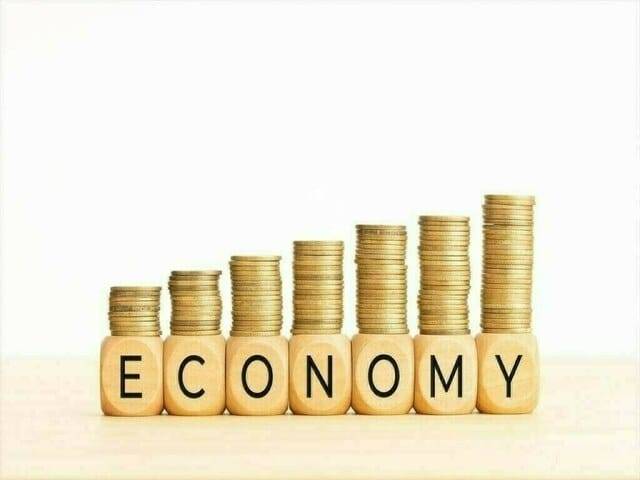Main Points In Hindi (मुख्य बातें – हिंदी में)
-
सरकारी व्यय में वृद्धि का अनुमान: अंतर्राष्ट्रीय मुद्रा कोष (IMF) ने चालू वर्ष में सरकारी व्यय में 2.1% की वृद्धि का अनुमान लगाया है, जबकि पिछले वित्तीय वर्ष में व्यय में कमी देखी गई थी।
-
कृषि और उद्योग पर प्रभाव: IMF की शर्तों के कारण कृषि और उद्योग के विकास में प्रमुख बाधाएं उत्पन्न हो सकती हैं, जिससे उत्पादन पर नकारात्मक प्रभाव पड़ने की संभावना है।
-
सरकार की नीतियों का पुनरावलोकन: सरकारी बजट में संशोधन के दौरान, राजकोषीय प्रोत्साहनों में कटौती और विशेष आर्थिक क्षेत्रों के नए प्रोत्साहनों को रद्द करने का वादा किया गया है, जिससे व्यवसायिक माहौल में मौजूदा बाधाओं को और गंभीरता से देखा जा रहा है।
-
पब्लिक सेक्टर डेवलपमेंट प्रोग्राम (PSDP) में कटौती: सरकार के विकास कार्यक्रम का बजट 30.6% घटा दिया गया है, जो पिछले वर्ष की तुलना में अधिकतम कटौती दर्शाता है, जबकि विकास के लिए आवश्यक आवंटन कम हो रहा है।
- व्यय में कटौती की आवश्यकता: आर्थिक कठिनाइयों के बावजूद, सरकार को अपनी व्यय संरचना में कटौती करने की सिफारिश की गई है, जिससे करों में वृद्धि के दबाव को कम किया जा सके और सार्वजनिक खर्च को नियंत्रित किया जा सके।
Main Points In English(मुख्य बातें – अंग्रेज़ी में)
Here are the main points from the editorial regarding the International Monetary Fund (IMF) and Pakistan’s economic situation:
-
Government Spending Estimates: The IMF’s fiscal monitor report predicts a 2.1% increase in government spending as a percentage of GDP for the current year, contrasting with the previous year’s estimates. However, this projection relies on challenging assumptions regarding economic growth and government budget estimates.
-
Impact on Agriculture and Industry: The report highlights concerns about the agricultural and industrial sectors, indicating that these sectors may struggle to meet growth targets due to IMF-imposed conditions. Specifically, there are calls to reduce government intervention in agricultural markets, which has led to market distortions and threats to fiscal stability.
-
Fiscal Incentives and Special Economic Zones (SEZs): The government has committed to avoiding fiscal incentives such as tax breaks for companies and not renewing existing benefits for SEZs. The aim is to reduce temporary solutions and ultimately phase out these zones by 2035, suggesting a need for a more sustainable business environment.
-
Public Sector Development Program (PSDP) Adjustments: Despite previous claims of increased budget allocations for the PSDP, actual funding has been reduced significantly. The current budget allocation is expected to fall short, highlighting the difficulty in managing fiscal pressures while claiming commitment to public welfare.
- Need for Expenditure Cuts: The editorial underscores the urgent need for the government to reduce its spending, especially given the difficult economic climate. It stresses the importance of implementing reforms, including voluntary sacrifices from major beneficiaries like pensioners, to ease the burden on taxpayers and stabilize the economy.


Complete News In Hindi(पूरी खबर – हिंदी में)
संपादकीय: अंतर्राष्ट्रीय मुद्रा कोष (आईएमएफ) ने अपनी राजकोषीय मॉनिटर रिपोर्ट “सार्वजनिक ऋण पर ढक्कन लगाना” में पिछले वित्तीय वर्ष के विपरीत चालू वर्ष में सकल घरेलू उत्पाद (जीडीपी) के 2.1 प्रतिशत की सरकारी व्यय में वृद्धि का अनुमान लगाया है। . हालाँकि, यह प्रक्षेपण दो धारणाएँ बनाता है जिन्हें चुनौती दी जा सकती है। सबसे पहले और सबसे महत्वपूर्ण, सरकारी बजट में 3.6 प्रतिशत की सकल घरेलू उत्पाद की वृद्धि का अनुमान लगाया गया था, जिसे आईएमएफ ने 3.2 प्रतिशत की वृद्धि का अनुमान लगाते हुए 3 से 3.5 प्रतिशत के बीच संशोधित किया था। इस समय यह गंभीर चिंता है कि विकास के दो प्रमुख घटक, विशेष रूप से कृषि और उद्योग, पाकिस्तान की आर्थिक टीम के नेताओं द्वारा सहमत आईएमएफ शर्तों के कारण लक्ष्यों को पूरा करने में असमर्थ हो सकते हैं, जिससे इन दोनों के उत्पादन पर नकारात्मक प्रभाव पड़ने की संभावना है। विकास में प्रमुख योगदानकर्ता.
कृषि क्षेत्र से संबंधित प्रतिज्ञाओं से संबंधित शर्तें निर्धारित करती हैं कि: “खाद्य सुरक्षा के महत्व पर ध्यान देते हुए, हम मानते हैं कि उर्वरकों सहित कृषि वस्तुओं के बाजारों में सरकार के बड़े पैमाने पर हस्तक्षेप अब उद्देश्य के लिए उपयुक्त नहीं हैं। उन्होंने निजी क्षेत्र की गतिविधि और नवाचार को बाधित करने वाली विकृतियाँ पैदा की हैं, मूल्य अस्थिरता और जमाखोरी को बढ़ाया है, और राजकोषीय स्थिरता को खतरे में डाल दिया है। सभी पाकिस्तानियों के लाभ के लिए एक चुस्त, उत्पादक, विविध और अंतरराष्ट्रीय स्तर पर प्रतिस्पर्धी कृषि क्षेत्र को सक्षम करने के लिए, हम समर्थन मूल्यों (कच्ची वस्तुओं के लिए) की घोषणा करने से बचेंगे और निजी क्षेत्र को बाहर करने वाले खरीद कार्यों को बंद कर देंगे, विशेष रूप से खरीद कार्यक्रमों को सीमित कर देंगे। संघीय सरकार के स्वयं के उपयोग के लिए आवश्यक है और एक कड़ाई से परिभाषित खाद्य सुरक्षा (उद्देश्यों और मापदंडों को पूर्व-पूर्व में स्पष्ट रूप से परिभाषित किया गया है), बाजार कीमतों पर सभी लेनदेन और इसके स्टॉक से कोई भी बिक्री लागत वसूली पर होगी। इसके अतिरिक्त, कॉटन जिनर्स एसोसिएशन द्वारा प्रलेखित अनुसार, कपास की फसल लक्ष्य से कम है।
उद्योग के संबंध में, सरकार ने कंपनियों को कर छूट या अन्य सब्सिडी (क्रेडिट सहित) जैसे राजकोषीय प्रोत्साहन प्रदान करने से परहेज करने का वादा किया है, और इसमें किसी भी नए या मौजूदा विशेष आर्थिक क्षेत्रों को नए राजकोषीय प्रोत्साहन प्रदान नहीं करना शामिल होगा। (एसईजेड), और मौजूदा को नवीनीकृत नहीं किया जाएगा, क्योंकि एसईजेड का मतलब कारोबारी माहौल में पहले से मौजूद बाधाओं का अस्थायी समाधान है। वे आगे चलकर नए एसईजेड या ईपीजेड बनाने से भी परहेज करेंगे। जबकि एक चरणबद्ध दृष्टिकोण पर सहमति हो गई है और सितंबर के अंत तक संक्रमण व्यवस्था की रणनीति को अंतिम रूप दिया जाना है, अभी तक सार्वजनिक रूप से साझा नहीं किया गया है, एसईजेड को पहले से मौजूद संविदात्मक दायित्वों के अधीन 2035 तक पूरी तरह से समाप्त कर दिया जाएगा; हालाँकि, संक्रमण अवधि के दौरान “अधिकारी मौजूदा कानूनी प्रतिबद्धताओं के अनुपालन के अधीन, पहले से मौजूद लाभ-आधारित प्रोत्साहन (जैसे कर छूट) को लागत-आधारित प्रोत्साहन (जैसे मूर्त संपत्ति पर तत्काल खर्च) से बदलने का प्रयास करेंगे।”
सरकार का सार्वजनिक क्षेत्र विकास कार्यक्रम (पीएसडीपी) विकास के लिए एक प्रमुख इंजन है और जैसा कि चलन बन गया है, एक के बाद एक प्रशासन बजट में अपने आवंटन को बढ़ा-चढ़ाकर बताता है ताकि यह दावा किया जा सके कि यह अपने पूर्ववर्तियों की तुलना में सार्वजनिक कल्याण के लिए अधिक प्रतिबद्ध है, लेकिन अंत तक इस वर्ष बजट में घाटे में वृद्धि को पूरा करने के लिए इस आवंटन में कटौती की गई है। संघीय पीएसडीपी का बजट पिछले साल 950 अरब रुपये था, जबकि संशोधित अनुमान से पता चलता है कि वास्तविक आवंटन 659,000 मिलियन रुपये था – लगभग 30.6 प्रतिशत की गिरावट। पिछले साल शहबाज शरीफ के नेतृत्व वाली सरकार द्वारा पेश किए गए बजट से आगे न बढ़ने के लिए, उनकी सरकार ने इस साल 1400 मिलियन रुपये के आवंटन का बजट रखा है, जो योजना, विकास और विशेष पहल के संघीय मंत्री अहसान इकबाल के अनुसार होगा। अब तक की सबसे खराब आर्थिक स्थिति के कारण 200 से 400 अरब रुपये की कटौती हुई – यह बयान उन्होंने दो महीने पहले दिया था।
इस अखबार ने लगातार सिफारिश की है कि सरकार को अपने वर्तमान व्यय परिव्यय को कम करने की आवश्यकता है, जिसे खराब आर्थिक परिस्थितियों के बावजूद बजट में 21 प्रतिशत तक बढ़ाया गया था, जिसके लिए पेंशन सुधारों (केवल संबंधित) सहित प्रमुख प्राप्तकर्ताओं के स्वैच्छिक बलिदान की आवश्यकता होगी कुल श्रम बल का 7 प्रतिशत (जिसमें नागरिक और सैन्य कर्मचारी शामिल हैं) जिन्हें अब पूरी तरह से करदाताओं के खर्च पर वित्त पोषित नहीं किया जाता है। समय की मांग इस व्यय मद को कम करने की है, जिससे करों को बढ़ाने और घरेलू और अंतरराष्ट्रीय बाजार से उच्च रिटर्न दर (अर्थव्यवस्था की स्थिति से जुड़ी दर) पर उधार लेने का दबाव स्वचालित रूप से कम हो जाएगा, जो बस जोड़ता है वर्तमान व्यय लागत के लिए.
कॉपीराइट बिजनेस रिकॉर्डर, 2024
Complete News In English(पूरी खबर – अंग्रेज़ी में)
Editorial: The International Monetary Fund (IMF) has projected a 2.1% increase in government expenditure as a percentage of Gross Domestic Product (GDP) for the current fiscal year, contrary to the previous year’s data. However, this prediction is based on two assumptions that can be questioned. Firstly, the government budget was initially expected to see a 3.6% growth in GDP, but the IMF has revised this to between 3% and 3.5%, suggesting serious concerns that key sectors such as agriculture and industry may struggle to meet these targets due to conditions imposed by the IMF. These conditions could negatively affect production in these crucial sectors, which significantly contribute to economic growth.
Regarding agriculture, the conditions set emphasize the importance of food security and argue that significant government intervention in agricultural markets, such as controlling fertilizer prices, is no longer suitable. This intervention has disrupted private sector activity and innovation, leading to price instability and increased hoarding, thus threatening fiscal stability. To enable a more competitive agricultural sector, the government is advised to avoid setting support prices and to cease purchasing programs that exclude the private sector. Additionally, the Cotton Ginners Association has documented that cotton production is below target.


On the industrial front, the government has committed to refraining from offering tax breaks or subsidies to companies and will not provide new fiscal incentives to special economic zones (SEZs) and will not renew existing benefits. SEZs are seen as temporary solutions to existing business environment issues, and no new SEZs or Export Processing Zones (EPZs) will be created. Although an agreement was reached on a phased approach that was to be finalized by the end of September, specific details have yet to be made public. SEZs will be fully phased out by 2035, but during the transition, officials will attempt to shift existing incentives from benefit-based to cost-based, such as immediate expenses on tangible assets.
The government’s Public Sector Development Program (PSDP) is a crucial engine for development. However, over time, successive administrations have inflated their budget allocations to claim a greater commitment to public welfare compared to their predecessors. Ultimately, this year’s budget allocation for the PSDP has been cut back to cover an increasing deficit. Last year’s federal PSDP budget was 950 billion rupees, but revised estimates show that the actual allocation is only 659 billion rupees—a decline of about 30.6%. To avoid exceeding the previous year’s budget, the current administration has set this year’s PSDP budget at 1.4 trillion rupees, despite acknowledging that the country is in one of its worst economic situations, leading to cuts of between 200 to 400 billion rupees, according to Ahsan Iqbal, the federal minister for planning, development, and special initiatives.
This newspaper has continuously recommended that the government needs to reduce its current expenditure, which has increased by 21% in the budget despite poor economic conditions. This reduction would require voluntary sacrifices from major recipients, including pension reforms affecting 7% of the total labor force (including civilian and military staff), who are no longer primarily funded by taxpayers. Reducing this expenditure is crucial to alleviate pressure on tax hikes and lower interest rates on borrowing from domestic and international markets, which ultimately adds to the cost of current expenditures.
Copyright Business Recorder, 2024








